As the automotive market continues to evolve, Renault has positioned itself well with two exciting models—the Renault Austral and the Renault Scénic. Both vehicles offer a blend of innovative technology and compelling design, but they target slightly different segments of the market. In this article, we'll dive into a comparison of these two popular options, examining their technical aspects, innovations, and overall driving experience.
Renault Austral vs Renault Scénic – Which car suits you better?
Everyday use, family trips or long-distance drives – here’s where the differences show.
Discover whether Renault Austral or Renault Scénic fits your lifestyle better.
Design and Dimensions
The Renault Austral is a modern SUV, showcasing a robust and dynamic presence on the road. With a length of 4510 mm, width of 1825 mm, and height of 1618 mm, it offers ample space for five passengers while balancing aesthetics with functionality.
In contrast, the Renault Scénic blends the characteristics of a compact MPV with the versatility of an SUV. Measuring 4470 mm in length, 1864 mm in width, and 1571 mm in height, the Scénic offers a slightly more spacious trunk at 545 liters compared to the Austral's 500 liters. This makes the Scénic a preferable choice for families or those needing extra storage.
Engine and Performance
When it comes to engine options, the Renault Austral provides a selection of petrol MHEV (mild hybrid) and full hybrid engines, producing power outputs of 158 HP and 200 HP respectively. The vehicle boasts a smooth automatic transmission with CVT or traditional gearbox options, making it a suitable choice for both productive city driving and adventurous weekend trips. With a 0-100 km/h acceleration time as quick as 8.4 seconds and a respectable top speed of 174 km/h, it's solid in performance.
On the other hand, the Renault Scénic takes a bold step into the electric vehicle arena. With maximum power outputs of 170 HP and 220 HP, the Scénic shows impressive capabilities. Acceleration is swift, with times of 8.6 seconds for the standard model and 7.9 seconds for the performance variant. As for its top speed, the Scénic hits 150 km/h, while the more robust version reaches 170 km/h.
Efficiency and Range
Fuel efficiency is a major selling point for both vehicles. The Renault Austral showcases commendable fuel consumption figures, ranging from 4.7 to 6.1 liters per 100 km, depending on the trim and engine choice. Its CO2 emissions are rated between 105 to 139 g/km, placing it moderately within the competitive range of SUVs.
Conversely, the Renault Scénic leads the pack in its electric variant, boasting consumption figures of 16.7 to 17.6 kWh/100 km, with an impressive electric range of up to 598 km. As a vehicle with zero tailpipe emissions, the Scénic sits comfortably in the CO2 efficiency class A, making it an environmentally friendly option.
Interior Features and Innovations
Inside, the Renault Austral is equipped with modern amenities and technology aimed at enhancing user experience. Features such as a large touchscreen infotainment system, smart connectivity options, and driver assistance technology come standard, providing both comfort and convenience during drives.
Meanwhile, the Renault Scénic places a strong emphasis on a digital experience, with advanced displays and a focus on sustainability in materials. The interior is designed to maximize space and comfort, ensuring the driver's experience is complemented by innovative tech and user-friendly features.
Conclusion: Which to Choose?
Deciding between the Renault Austral and the Renault Scénic ultimately depends on individual needs and preferences. If you seek a hybrid powerhouse with strong performance capabilities, the Austral might be your best bet. However, for those prioritizing electric efficiency and a spacious cabin configuration, the Scénic rises to meet those demands.
Both models embody Renault's commitment to innovation, efficiency, and design, making either option a worthy consideration for today’s discerning drivers.
Here’s where it gets real: The technical differences in detail
Costs and Efficiency:
Price and efficiency are often the first things buyers look at. Here it becomes clear which model has the long-term edge – whether at the pump, the plug, or in purchase price.
Renault Austral has a slightly advantage in terms of price – it starts at 29700 £, while the Renault Scénic costs 34600 £. That’s a price difference of around 4886 £.
Engine and Performance:
Power, torque and acceleration say a lot about how a car feels on the road. This is where you see which model delivers more driving dynamics.
When it comes to engine power, the Renault Scénic has a slight edge – offering 218 HP compared to 200 HP. That’s roughly 18 HP more horsepower.
In acceleration from 0 to 100 km/h, the Renault Scénic is hardly perceptible quicker – completing the sprint in 7.90 s, while the Renault Austral takes 8.40 s. That’s about 0.50 s faster.
In terms of top speed, the Renault Austral performs barely noticeable better – reaching 180 km/h, while the Renault Scénic tops out at 170 km/h. The difference is around 10 km/h.
There’s also a difference in torque: Renault Scénic pulls hardly perceptible stronger with 300 Nm compared to 270 Nm. That’s about 30 Nm difference.
Space and Everyday Use:
Cabin size, boot volume and payload all play a role in everyday practicality. Here, comfort and flexibility make the difference.
Both vehicles offer seating for 5 people.
In curb weight, Renault Austral is to a small extent lighter – 1539 kg compared to 1822 kg. The difference is around 283 kg.
In terms of boot space, the Renault Austral offers minimal more room – 555 L compared to 545 L. That’s a difference of about 10 L.
In maximum load capacity, the Renault Austral performs slight better – up to 1761 L, which is about 91 L more than the Renault Scénic.
When it comes to payload, Renault Scénic slight takes the win – 518 kg compared to 477 kg. That’s a difference of about 41 kg.
Who wins the race?
The Renault Austral proves to be won narrowly and therefore becomes our DriveDuel Champion!
Renault Austral is the better all-rounder in this comparison.
 @ Renault Group Media
@ Renault Group Media
Renault Austral
Renault Austral
The Renault Austral dresses the family SUV in elegant modern looks and a surprisingly grown-up cabin that feels thoughtful and livable. It balances comfort and clever technology with a relaxed road presence—an appealing choice for buyers who want style and everyday sense without fuss.
details @ Renault Group Media
@ Renault Group Media
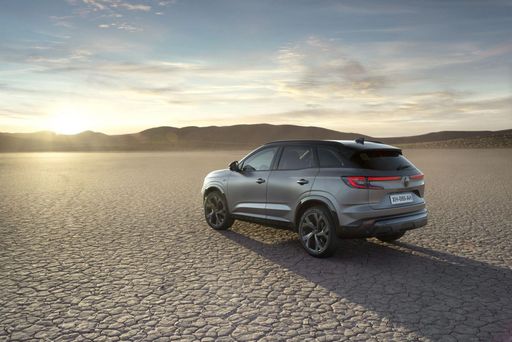 @ Renault Group Media
@ Renault Group Media
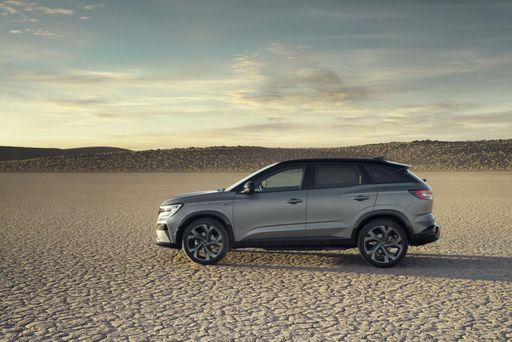 @ Renault Group Media
@ Renault Group Media
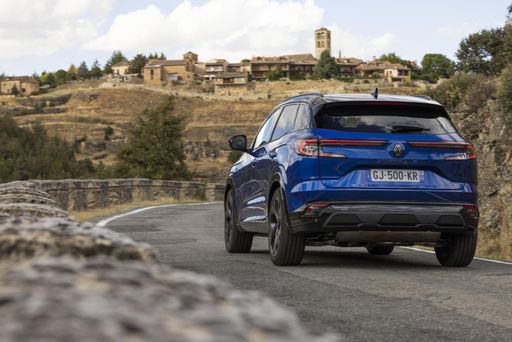 @ Renault Group Media
@ Renault Group Media
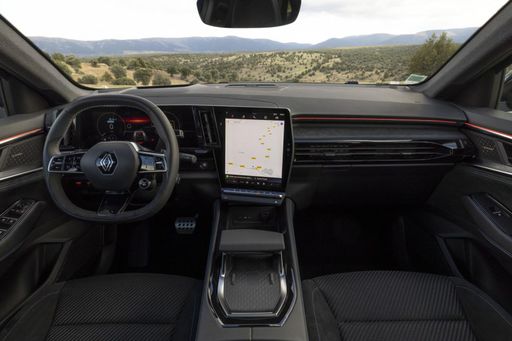 @ Renault Group Media
@ Renault Group Media
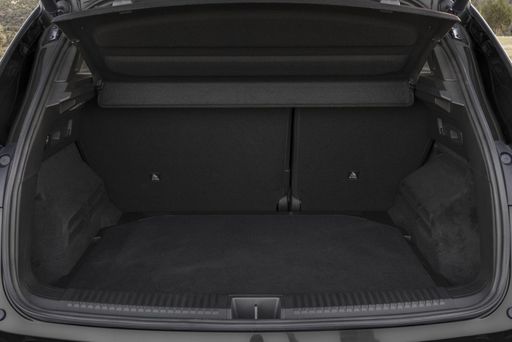 @ Renault Group Media
@ Renault Group Media
Renault Scénic
The Renault Scénic is a quietly clever family MPV that balances everyday practicality with unexpected flair, offering a roomy, flexible cabin that makes school runs and weekend escapes less of a chore. It won't dazzle like a sports car, but its composed ride, sensible tech and thoughtful storage solutions make it a superbly pragmatic choice for buyers who prefer substance with a wink.
details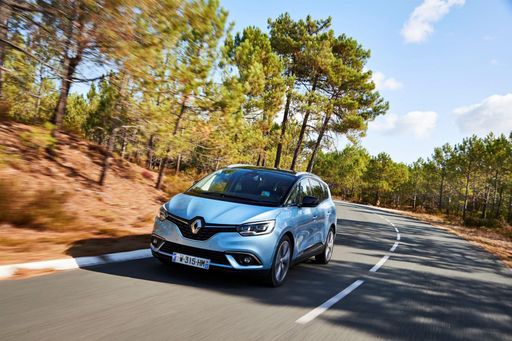 @ Renault Group Media
@ Renault Group Media
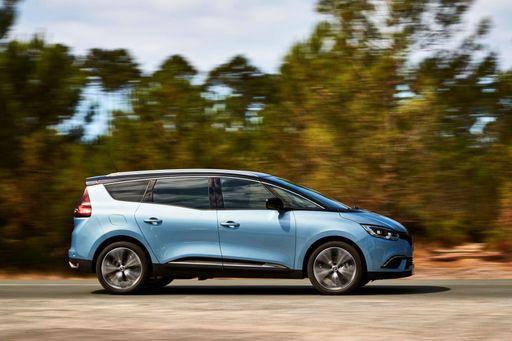 @ Renault Group Media
@ Renault Group Media
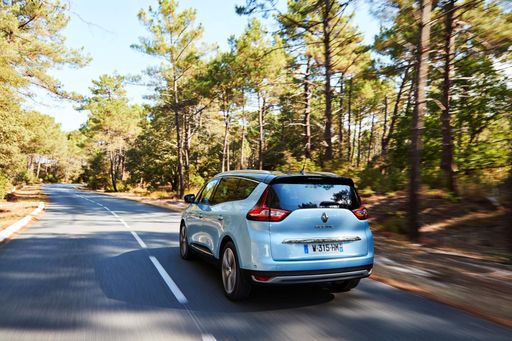 @ Renault Group Media
@ Renault Group Media
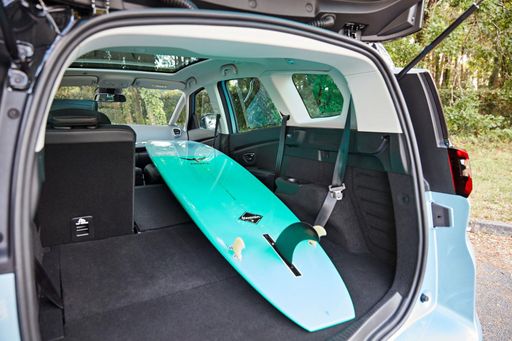 @ Renault Group Media
@ Renault Group Media
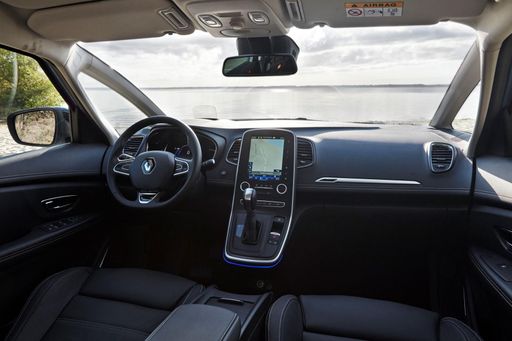 @ Renault Group Media
@ Renault Group Media
 @ Renault Group Media
@ Renault Group Media
|
 @ Renault Group Media
@ Renault Group Media
|
|
|
|
Costs and Consumption |
|
|---|---|
|
Price
29700 - 37800 £
|
Price
34600 - 44000 £
|
|
Consumption L/100km
4.8 - 6.5 L
|
Consumption L/100km
-
|
|
Consumption kWh/100km
-
|
Consumption kWh/100km
16.6 - 17.5 kWh
|
|
Electric Range
-
|
Electric Range
420 - 598 km
|
|
Battery Capacity
-
|
Battery Capacity
-
|
|
co2
109 - 148 g/km
|
co2
0 g/km
|
|
Fuel tank capacity
55 L
|
Fuel tank capacity
-
|
Dimensions and Body |
|
|---|---|
|
Body Type
SUV
|
Body Type
SUV
|
|
Seats
5
|
Seats
5
|
|
Doors
5
|
Doors
5
|
|
Curb weight
1539 - 1613 kg
|
Curb weight
1822 - 1927 kg
|
|
Trunk capacity
527 - 555 L
|
Trunk capacity
545 L
|
|
Length
4533 mm
|
Length
4470 mm
|
|
Width
1825 mm
|
Width
1864 mm
|
|
Height
1645 mm
|
Height
1571 mm
|
|
Max trunk capacity
1736 - 1761 L
|
Max trunk capacity
1670 L
|
|
Payload
464 - 477 kg
|
Payload
514 - 518 kg
|
Engine and Performance |
|
|---|---|
|
Engine Type
Petrol MHEV, Full Hybrid
|
Engine Type
Electric
|
|
Transmission
Automatic
|
Transmission
Automatic
|
|
Transmission Detail
CVT, Automatic Gearbox
|
Transmission Detail
Reduction Gearbox
|
|
Drive Type
Front-Wheel Drive
|
Drive Type
Front-Wheel Drive
|
|
Power HP
158 - 200 HP
|
Power HP
170 - 218 HP
|
|
Acceleration 0-100km/h
8.4 - 9.7 s
|
Acceleration 0-100km/h
7.9 - 8.6 s
|
|
Max Speed
180 km/h
|
Max Speed
150 - 170 km/h
|
|
Torque
270 Nm
|
Torque
280 - 300 Nm
|
|
Number of Cylinders
3 - 4
|
Number of Cylinders
-
|
|
Power kW
116 - 147 kW
|
Power kW
125 - 160 kW
|
|
Engine capacity
1199 - 1332 cm3
|
Engine capacity
-
|
General |
|
|---|---|
|
Model Year
2025
|
Model Year
2025
|
|
CO2 Efficiency Class
E, C
|
CO2 Efficiency Class
A
|
|
Brand
Renault
|
Brand
Renault
|
What drivetrain options does the Renault Austral have?
Available configurations include Front-Wheel Drive.
The prices and data displayed are estimates based on German list prices and may vary by country. This information is not legally binding.
